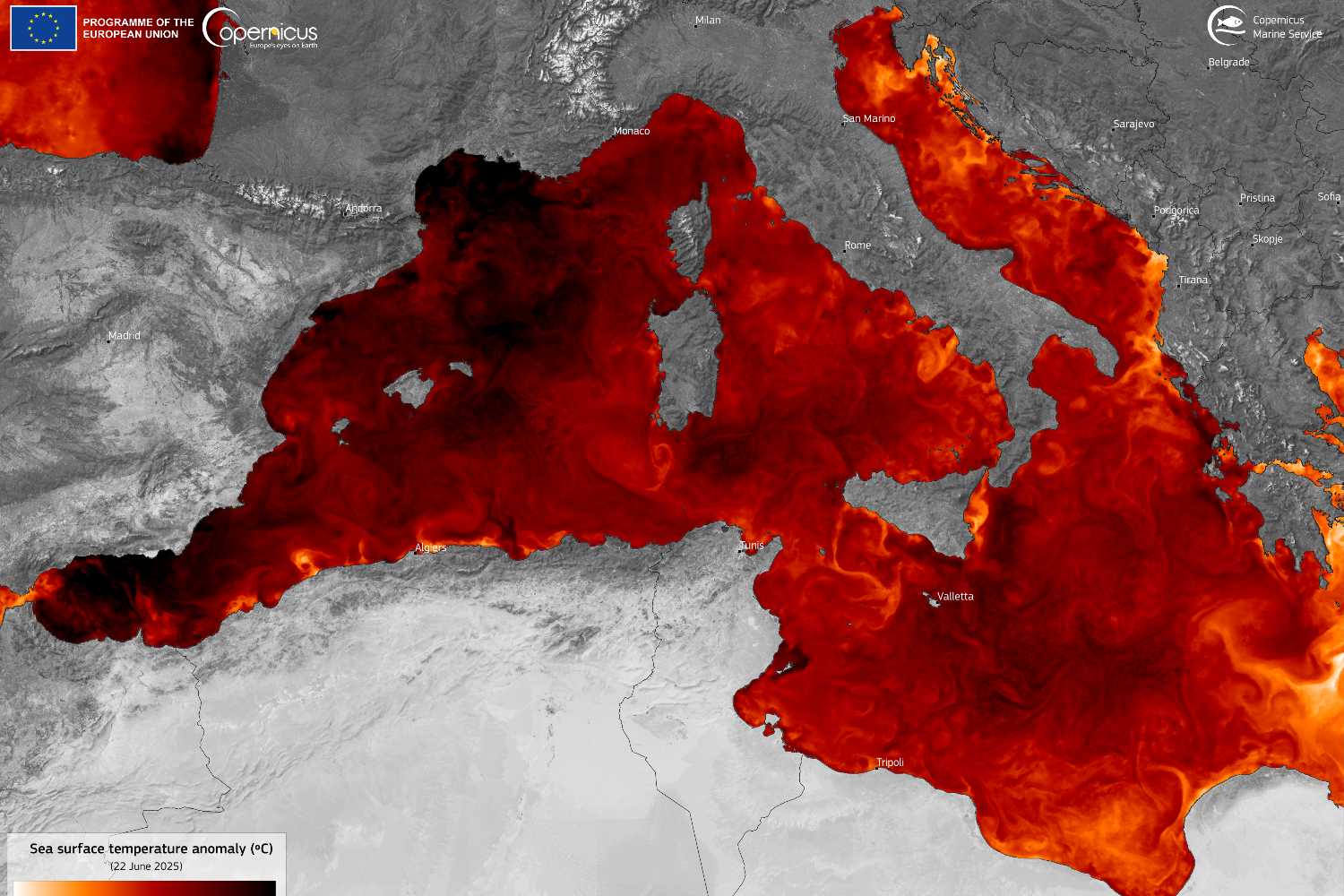The Mediterranean is already 5°C (9°F) above normal this summer. A marine heatwave is fueling heat, storms, and ecological collapse — and it's a warning we can't ignore.

@European Union, images: Copernicus -Sentinel-X
The summer of 2025 kicked off not with lazy beach days or a gentle breeze along the coast, but with an extreme climate event that’s stirring up more than just the atmosphere. The Mediterranean Sea is heating up to levels that wouldn’t be expected even in late July — and we’re only at the start.
According to data from the European Copernicus service, surface waters in the western Mediterranean are registering temperature anomalies of over +5°C (9°F) above the seasonal average. The hot zone spans wide areas between Sardinia, the Balearic Islands, and the Tyrrhenian Sea. This phenomenon isn’t just a blip: it’s what scientists now call a Marine Heatwave, and it’s increasingly driven by climate change.
The heat isn’t staying in the sea
One of the most immediate effects of this marine overheating is that the excess heat doesn’t remain confined to the water — it spills into the atmosphere. That means air temperatures are also rising, particularly along the coastlines and in major urban areas. The result? Higher relative humidity, tropical nights (minimum temperatures above 20°C / 68°F) and the kind of sticky, heavy heat that makes sleeping nearly impossible and daytime life a slow slog.
Ecosystems on edge
But the impact goes far beyond human discomfort. Marine ecosystems are under serious stress. When seawater heats up like this, it sets off a domino effect. Algal blooms become more frequent. Benthic fauna — the animals that live on the ocean floor — struggle to survive. And invasive alien species take advantage of the warmer waters, moving in from tropical zones and disrupting local balances.
In the Adriatic Sea, the scenario might turn familiar — and not in a good way. Past heatwaves have triggered mucilage events, when a thick, gelatinous substance spreads through coastal waters, making swimming not just unpleasant but often impossible. It’s not a picturesque Mediterranean postcard; it’s more like the sea itself is trying to warn us.
Weather chaos on the horizon
On the meteorological front, the hot sea acts as a massive energy reservoir. And when that energy gets triggered — for instance, by incoming Atlantic weather fronts — it can give birth to violent storms, hailstorms, and sudden, destructive downbursts. Northern and inland parts of Italy are particularly at risk, but central and southern areas aren’t off the hook either.
Essentially, the Mediterranean turns into fuel for atmospheric turbulence, and the results can be as beautiful as a lightning show over the coast — or as dangerous as flash floods and hurricane-force winds.
A red flag for the climate
The bigger picture? It’s a climate red flag waving furiously. These marine temperature anomalies aren’t isolated incidents. They’re symptoms of a destabilizing system, one where extreme and destructive events could become the norm rather than the exception.
Without robust adaptation strategies and a radical cut in emissions, we’re looking at a future where each summer might outdo the last — not in terms of beauty or vacation memories, but in environmental and human cost.
As unsettling as it all sounds, it’s also a moment of clarity. The sea, once seen as a source of relaxation and escape, is now a mirror of our environmental crisis — and it’s starting to boil.
Source: Copernicus
